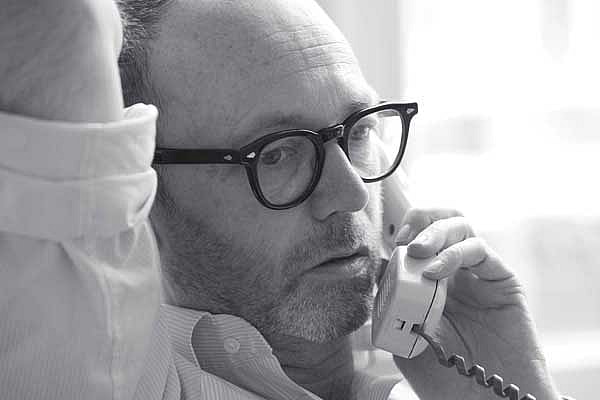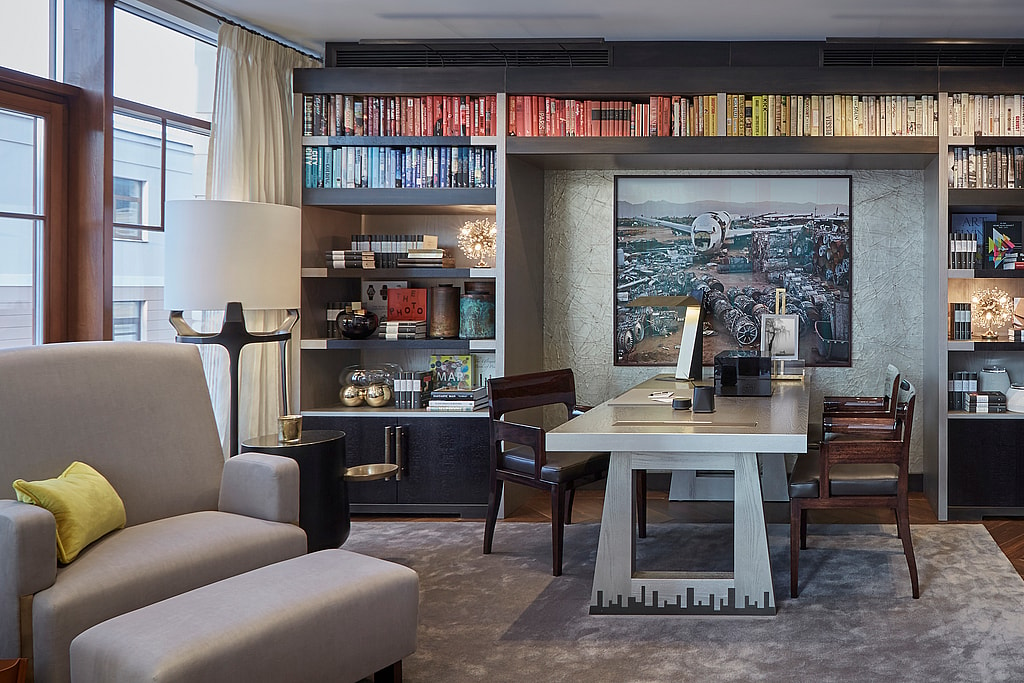Design Date – Thomas Croft

Architect Thomas Croft heads up TCA, which he established in 1995. The practice is known for its links with the art world, having designed many commercial galleries (including David Gill Galleries and Timothy Taylor Gallery in London, and Ordovas Art in both New York and London), as well as art-filled private homes for leading gallerists and other collectors. He is taking part in a panel discussion at Focus/16 hosted by FT How To Spend It that discusses the blurring boundaries between art and design, and the ways in which art affects his work and life.
Conversations in Design: Art and Design: Crossing The Boundary, 11.30am, Tuesday 20 September
How has the rise of art collecting among private clients affected how you work?
Maybe it’s just the sectors we’ve worked in but we’ve always found art is a crucial component of lots of our projects. The architects who I worked for between leaving the Royal College of Art in 1985 and starting my own office in 1995 (Richard Meier, John Pawson and Rick Mather) always did both galleries and houses for dealers/collectors. So doing the same sort of projects for my own clients was a natural progression of that.
When you’re accommodating amazing artworks in a home, how do you balance the softer domestic side with the need to show off the art to its best?
So long as the art is well lit, then it can usually look just as good in a home or in a gallery. We’ve done three projects in recent years for the New York art dealer Per Skarstedt –two galleries and one home – and the same art looks equally good in both without any need for accommodation in terms of design.
You’ve also designed private galleries – what’s influencing the design of such spaces?
The air conditioning specifications keep going up – these days most commercial galleries require museum-quality air-conditioning and humidity control. This can be very expensive to achieve and it’s something that the top private collectors will probably want to start installing at home as well, in order to keep pace with insurance requirements etc.
A further development is the need for drastically reinforced floor structures, to take very high sculpture loadings wherever they might need to be located in the future. We’ve done this in several collector’s homes already.
Do you collect art yourself? What sort of thing?
We are lucky enough to have two homes and they have quite different art. In London we have all contemporary works by artists like Richard Hamilton and Gary Hume, plus a lot of long-term loans from Nvisible Museum’s collection.
In the country it’s a house I originally designed for my late parents and it contains a lot of family pictures from the 17th to the 19th centuries, mostly portraits of previous Crofts (we used to own the Anglo-Portuguese port wine house Croft Port). It’s nice to see the old family members at the weekend but it’s equally nice to be able to leave them behind and get back to modernity.
What is your earliest ‘design’ moment, the one that perhaps set you on your path?
The architects I met when I was a child seemed like nice people. Going to school in the precincts of Canterbury Cathederal for five years probably had an effect also.
What projects are you currently working on?
The new Skarstedt gallery in London, which opens on 1 October, and three new houses for the Howard de Walden Estate, behind RIBA HQ off Portland Place, which just started construction. A new building for the Royal Yacht Squadron in Cowes on the Isle of Wight is on the drawing boards.
Do you have a design mantra?
No, we’re very undogmatic and like to stay flexible.
What do you obsess over in your work?
The world seems complicated enough and we always try to simplify as much as possible, even though there might be a lot of background complexity required to achieve that simplicity. Obviously the lack of visual clutter is a must for all gallery spaces and consequently we spend a lot of time obsessing over trying to control & reduce a plethora of air conditioning, lighting, fire, CCTV and PIRs that always conspire to disrupt that simplicity.
Who would design your perfect house?
I’d be pretty happy living in a Richard Meier-designed house. However there aren’t currently many to choose from in the UK; at the age of 81 he’s just built his first, outside Henley, for the actor Rowan Atkinson.








